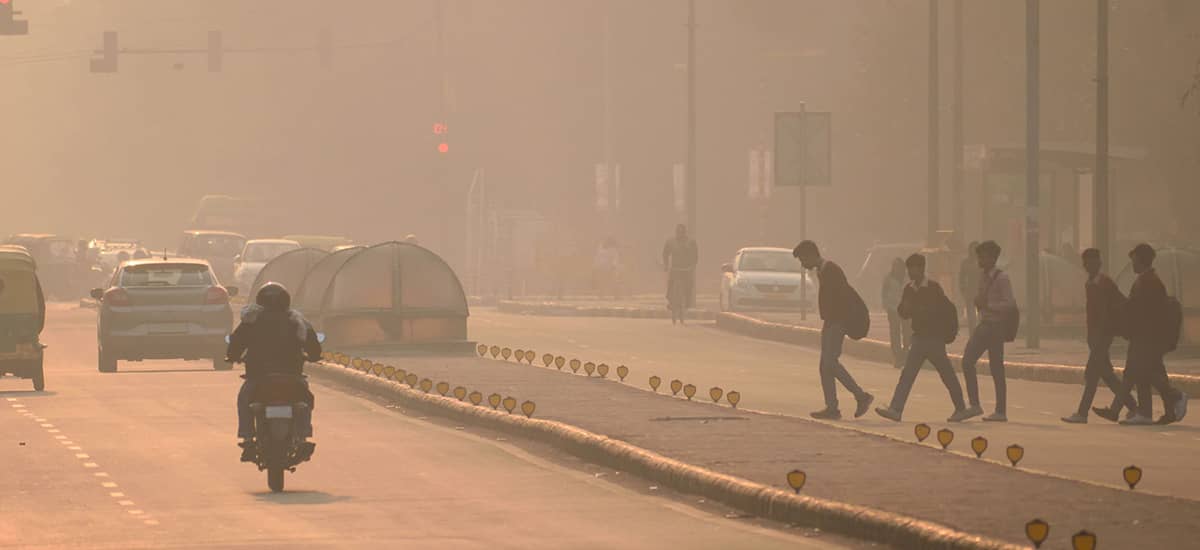
Low and middle-income countries are home to about 80% of the people in the world exposed to dangerous levels of air pollution, with its numerous deleterious effects, including disease and mortality and diminished cognitive performance, labor supply and productivity. Yet those countries often lack the resources to accurately measure air pollution and determine how policies might affect it. Regulatory-grade monitors represent the gold standard in pollution monitoring, offering detailed and precise measurements. But a single such monitor can cost $100,000, and while high-income countries can afford networks of them to deliver accurate measurements, that expenditure is out of reach for many lower-income nations.
In recent years, various studies have suggested that lower-cost, consumer-grade monitoring devices hold promise, helping developing nations in Latin America and beyond get much of the vital information on air pollution they need at a fraction of the expenditure. But more research is needed to determine exactly how accurate those technologies are in these settings and whether a mix of technologies might help to better detect air pollution over both space and time while offering a more precise view of the impact of policy decisions on it.
A Study in Dakar
We decided to examine the issue in Dakar, a large and growing city in Senegal, a lower-middle income country with sizeable industrial plants, an active construction industry, traffic congestion, and Saharan desert storms. We focused on monitoring particulate matter with a diameter of 2.5 micrometers or less (PM2.5), a particularly dangerous component of air pollution including dust, dirt, soot and smoke.
Dakar has seven regulatory-grade monitors, a limited number that, along with frequent maintenance problems, is insufficient for providing high quality data on air pollution at fine intervals of time and space. So we set up a network of low-cost pollution monitors in 28 different locations across the city, and working with the government, tested the extent to which a mix of that more affordable technology, with a more limited number of regulatory-grade monitors or satellite data, could provide Senegal with the data needed to understand and reduce air pollution.
The Benefits of Mixing Technologies to Measure Air Quality
Our results were heartening. We found that a network of low-cost monitors has significant potential for monitoring air pollution levels in developing countries, provided they can be blended with a small number of regulatory-grade monitors or satellite data to calibrate them for accuracy in the specific context. We also found that lower-cost monitors could provide similar estimates of the impact of a policy – in this case the mobility restrictions during the COVID-19 pandemic –on PM2.5 in cities, particularly when measured in percentage changes rather than in levels.
The key to the use of low-cost monitors seems to lie in using other technologies to provide context-specific calibrations. In our context, low-cost monitors substantially underestimate PM2.5, especially because of their under-measurements of dust. But using a single regulatory-grade monitor amid a larger network of low-cost monitors offers new possibilities. A context-specific calibration formula can be developed from a single regulatory monitor so that PM2.5 readings from the higher and lower cost technologies better align. In the absence of a regulatory-grade monitor, satellite-based estimates of PM2.5 can serve as an alternative, though they are not as precise, especially at higher temporal frequencies.
A Potential Solution for Low-Income Countries in Latin America and Rural Areas of High-Income Ones
Mixing technologies, in short, may offer developing countries options that they did not have before. While Bogotá, Mexico City, and São Paulo already have robust measuring systems, smaller cities in Latin America and the Caribbean, and low-income countries more generally, may not be able to invest in an expensive network of regulatory-grade monitors and replace them at recommended intervals to ensure accuracy as higher income countries can do. But by locating a regulation-grade monitor amid a larger network of lower-cost monitors, they can achieve a lot of the needed accuracy while maintaining the spatial reach required for measuring different pollution concentrations across a large urban or rural landscape. Calibration of the data from the network of low-cost monitors with satellite data, while somewhat less accurate, can also lead to significant improvements. Moreover, these innovations don’t have to be limited to developing countries. They can also be used in rural or suburban areas of higher-income countries where the coverage of regulator-grade monitors is also sparse.


Leave a Reply